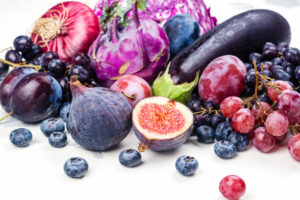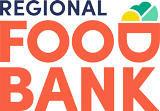
Our final rainbow blog post is all about the blues and purples. Blue and purple fruits and vegetables aid urinary tract health, may lower the risk of stroke, and promote memory function and healthy aging.
A few examples of blue and purple fruits and vegetables:
Blueberries: Eat blueberries on their own or in a yogurt parfait, or use them to make a sauce or a jam.
Red grapes: Red grapes can be eaten alone or halved and added to a salad, and they can also be used to make jams and jellies.
Red onion: Red onion can be chopped raw and added to chicken or chickpea salads. It can also be pickled and added to sandwiches or savory toasts.
Purple cabbage: Purple cabbage can be eaten raw in coleslaw or salads or added to soups or stir fries.
Fun fact: Of all fruits and vegetables, blueberries have the highest levels of anthocyanins, which make blueberries blue and provide many of their health benefits.

